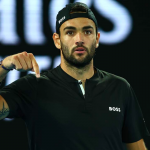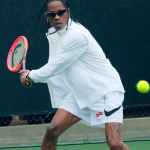
Why more and more lifestyle brands are investing in tennis
How so many brands are trying to leverage the public profile of tennis players to land in the sportswear universe
May 27th, 2022
That of investing in the improvement of one's personal branding - understood as the development of a storyline behind the character and the precise definition of a certain image - has long been a common practice in the world of sports, which has repeatedly been accompanied by the actual creation of a sportswear brand. In particular, the case of tennis has set the standard with brands such as Sergio Tacchini, Lacoste or Fred Perry that started from the personal initiatives of tennis players and then became the leading companies in the industry.
Over time, the presence of these brands in the tennis scene has certainly lightened-never completely disappeared, with Lacoste and Sergio Tacchini sponsoring some of the most important players on the circuit and Fred Perry keeping itself laced with the racquet universe while also being a lifestyle brand that has defined various youth cultures. These brands have succeeded in interweaving a strong presence in the performance world with off-court market positioning, bringing the typical style and values of tennis into everyday life through their apparel.
This brief historical contribution clearly demonstrates how much potential there is to exploit in the image of a professional athletes, but at the same time reveals a strong stylistic aptitude of tennis to find space away from the field as well. Today there are now numerous brands that, enhancing this double-wire connection, are attempting (or have attempted) to enter the world of sportswear. And what better way to do this than to link their image to that of successful tennis players with well-defined personal branding?
One of the most glaring examples is that of Uniqlo, which invested $300 million over 10 years to secure the signature of Roger Federer, for whom Tadashi Yanai (CEO of Uniqlo) said he has "a respect that goes far beyond sports." And indeed, Federer is not only one of the most awarded and appreciated players in history, he is also the most crystalline symbol of class and elegance present in the entire tennis landscape. The Japanese brand-which has taken over from Nike after more than 20 years-has dressed the Swiss champion in ever-changing outfits, designed and colored to match the playing surface, but always retaining that order and attention to detail that is as characteristic of Uniqlo as it is of Federer. Of the many common goals, one that best reflects the idea of the future shared by both parties is to take tennis to a new level in the field of design and technology as well.
Most recently, BOSS signed a major technical sponsorship deal with Matteo Berrettini, which will see him wearing the German fashion house's products on court as a Global Brand Ambassador. On the occasion of the Australian Open, a first BOSS X MATTEO BERRETTINI limited capsule collection was also unveiled, with garments conceived and designed for the game and with more casual ones to be worn off the court, but with an eye always turned to social issues: in fact, part of the proceeds will be donated to a fundraising campaign in support of less fortunate Italian children.
Looking within our own walls, we can find another all-Italian example of these partnerships, that between Fabio Fognini and Armani, which has also recently sponsored Georgian NikolozBasilashvili. Already penetrated the sportswear world with the EA7 brand, printed on the uniforms of Olimpia Milano and technical sponsor of Napoli and Italian Olympic athletes, from 2019 Armani wanted to secure a role in tennis as well, making Fognini the testimonial of its line.
In team sports, the colors, logos and traditions of the clubs constrain, or at least direct, the creativity of brands and their artists, while in tennis there are no such limits. By tying themselves to tennis champions, even signatures that are more strictly fashionable and less familiar with the world of sports can unleash their imagination and breathe new life into their brand. Only the future will tell how far this new trend will succeed in undermining the absolute dominance of the sportswear giants, with new brands being created from the very brightest talents on the ATP circuit.























